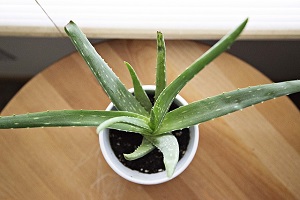The lingzhi mushroom (灵芝) is one of the most revered herbs in traditional chinese medicine (TCM). It’s famous name shares as much fame as ginseng and bird’s nest.
Also known as reishi, or glossy ganoderma, TCM stores sometimes display highly valuable lingzhi as a proud declaration of their prized possession.
During Chinese new year or any celebration events, especially when seniors are the focal point, lingzhi is a proper gift that is meant to convey deep respect and a wish of good health for the recipient.

Among it’s various alias, some of the best known ones are the herb of spiritual potency, herb of revival, magic mushroom, divine fungus, herb of immortality, sacred fungus, etc.
As you can see, all these nicknames have connotations to a long life. After all, it can survive for a very long time and becomes somewhat woody over time instead of decaying.
The lingzhi fungus has a unique shape and often make an appearance in Chinese movies as a valuable herb that swordsmen battle over it’s possession.
While the plant is believed to maintain youth, it is said that purple lingzhi prolongs life while the red lingzhi help attain immortality.
Ancient text describes it having an appearance of water-grass shape with long leaves. It also grows on an island located in the Eastern sea.
Legend of lingzhi herb
According to folklore, the lingzhi can be so elusive that it appears only during times of righteous leaders of good governance. This might sound familiar as this is also said of certain things such as the chi lin.
Lingzhi is commonly mentioned in legends and stories, in books and television, and all types of media.
But the most famous story it is known for is probably the one with Madam White Snake as it’s one of the recognized classics of Chinese novels.
The story was that the protagonist drank realgar wine during the dragon boat festival and her true serpent form was unveiled. Her mortal husband Xu Xian (许仙) was so shock to learn about the real nature of his wife that he died instantly from a heart attack. Having heard of the magical healing powers of the lingzhi, madam white snake went on a quest to Kun Lun mountains where the herb was believed to grow. Having found the lingzhi mushroom a crane appeared to deter her from taking it. After a short scuffle, Shou of sanxing appeared to restrain the giant bird. Madam explained her reasons for “stealing” the herb. She was then allowed to take it home. After consuming the herbal soup, Xu Xian revived from the dead.
In another mythological tale, Yao Ji, a daughter of Emperor Yao who died young turned into a lingzhi.
The immortal mushroom is also commonly depicted in artwork.
When painted with a deer, it represents the wish for longevity. This carries the same meaning when drawn with a crane. It was believed that spotted dear have a unique ability to find and consume the fungus of immortality.
A popular painting of good health has the herb as one of 4 items including the bamboo, narcissus, and longevity stone.
Another popular painting has the ling zhi in a trio together with lychee and water chestnut. This is a metaphor for the saying that sometimes it is better to be obnoxious than smart.
Paintings with lingzhi and persimmons signify things going smoothly as one wishes. It shares the same meaning when lilies are involved in the group.
The ru yi scepter it often made with a head component that is shaped like lingzhi fungus. This is why the plant is sometimes meant to convey the same message as the ruyi when depicted in paintings.
When arranged with a pair of catfish, it means having things happen as you wish every every year.
If coupled with Japanese lily, it symbolizes things going according to wishes 10,000 times.
A foursome consisting of lingzhi, narcissus, sacred bamboo and camellia is a popular design motif used during CNY to represent auspicious prosperity.
It has also been written in stories that the First emperor who was famous for his pursuit of immortality ordered several quest to find the mushroom of longevity.
Feng shui and placement
Even though ling zhi mushroom is understandably tied to the aspect of longevity, many people don’t know that it also carries connotations with rapid personal growth and personal success of people who are in positions that require regular public appearances.
The display of lingzhi as a standalone centerpiece painting or artwork is not recommended as the plant is after all, a mushroom. And mushroom proliferate on the expense of other trees, flowers and plants. It is therefore not a good idea to display a painting of the reishi by itself prominently at home. It might just such the life out of the house!
This is why the display of lingzhi as symbolic items at home most often come in paintings of deers and cranes as mentioned earlier.
In such cases, the focal points are the animals with the magic fungus in the background or foreground.
Since the focal point of artwork is usually a different feng shui symbol or animal, the placement of them will depend accordingly.















